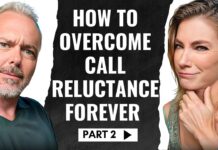Videography is becoming the name of the game for real estate websites. The click rate is 40% higher compared to single frame photography and often, if there is no videography on the agent’s website, the consumer just moves on to another agent’s website that does have it.
For agents who are eager to learn a new skill because you love learning and for agents with more shallow pockets and less able to pay professionals, here are some video basics that will help you with this new blend of videography and photography.
Start with what you already know…your basic rules of photography composition…the rule of thirds (mentally divide the image using 2 horizontal lines and 2 vertical lines; put the most important elements of the image where the lines/points meet), straight horizons and uncluttered backgrounds. The main difference between is the margin of error…you can “fix” little mistakes in photos by rotating or cropping them…you can’t “fix” little errors in videos.
Think in sequences. Video is about telling a story in time; photos are about telling a story in a single moment in time. Think through how these sequential elements interact…or don’t. Focus on capturing engaging, specific clips that can be blended together to tell the house’s story.
Video is motion. You need to understand motion. Video is a collection of multiple exposures or seconds. This motion rate is called Frames Per Second (FPS). The most common frame rates are 24 (the slowest), which gives the video a more cinematic effect; 30 fps (gives more details and appears more realistic like TV footage) and 60 fps (which gets close to human vision…it’s used in sports videos a lot.)
Capture the video manually, not automatically. Unlike photography where automatic camera modes make things simpler, automatic video modes show every tiny exposure change. Select all your settings, including focus, before you start recording. Mix up the feeling of the video by letting moving subjects (dogs, kinetic sculpture, etc.) go in and out of focus.
Balance your shutter speed. Like in photography, shutter speed determines the amount of movement you’ll capture in each frame. The general rule…shutter speed should double your fps rate (…i.e. 1/8 for 24 fps; 1/60 for 30 fps, etc.) Round the result to the nearest amount available for your camera.
Control the light. Use neutral density filters (you likely already have those in your photo camera bag) to prevent over exposure. Forget about using a camera flash when you need more light…it’s useless. You need constant lighting that illuminates the house/room/subject at all times.
Sound is important. Built-in video microphones are useless. Invest in an external audio recorder if you’re syncing sound or oral descriptions with the video. No one wants to watch a gorgeous video with terrible sound.
Find software that works for you. This is pretty much individualized so we suggest doing your own research here. The good news is that many software companies offer free trial periods.
Practice makes perfect. But then you already know that. The more you do, the better you’ll do it. And you may even become so expert that your colleagues at different firms will want you to be their videographer.
Thanks to the Wix photography blog and Judit Ruiz Ricart.






























